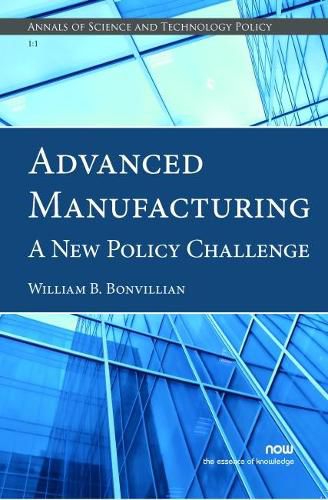Readings Newsletter
Become a Readings Member to make your shopping experience even easier.
Sign in or sign up for free!
You’re not far away from qualifying for FREE standard shipping within Australia
You’ve qualified for FREE standard shipping within Australia
The cart is loading…






This title is printed to order. This book may have been self-published. If so, we cannot guarantee the quality of the content. In the main most books will have gone through the editing process however some may not. We therefore suggest that you be aware of this before ordering this book. If in doubt check either the author or publisher’s details as we are unable to accept any returns unless they are faulty. Please contact us if you have any questions.
After a long decline in American manufacturing in the 2000s - manufacturing employment fell by one third, 64,000 factories closed, manufacturing capital investment and output suffered, and the productivity rate dropped during this period. Simultaneously, the U.S. had been systematically shifting production abroad, and the decline in production capability was starting to affect innovation capacity - which had long been viewed as a core strength of the U.S. economy.
This book reviews the origins of the policy response to this dilemma, which came to be called advanced manufacturing. It traces the way the foundational concepts were developed in a series of reports from in and out of government. It explores how, for the first time, an innovation system response was considered and developed to strengthen the U.S. production system. It examines the key new policy mechanism created by the Administration and supported by Congress, the manufacturing innovation institutes, a complex public-private collaborative model to develop new production technologies and processes, with supporting workforce education.
It reviews how the new institutes are working, lessons learned as they have started up and possible enhancements that could expand their policy reach. While this model may create efficiencies and productivity gains to help put existing U.S. manufacturers back in competition with lower cost and lower wage competitors abroad, there is a second problem - the U.S. innovation system based on venture capital for implementing the IT and biotech innovation waves of the late 20th century now largely shifted to support software firms, abandoning manufacturing startups. This is now driving the next generation of manufacturers to production abroad, which will have significant societal consequences longer term. This monograph reviews new models to tackle this problem, essentially substituting technology and knowhow rich spaces for capital.
$9.00 standard shipping within Australia
FREE standard shipping within Australia for orders over $100.00
Express & International shipping calculated at checkout
This title is printed to order. This book may have been self-published. If so, we cannot guarantee the quality of the content. In the main most books will have gone through the editing process however some may not. We therefore suggest that you be aware of this before ordering this book. If in doubt check either the author or publisher’s details as we are unable to accept any returns unless they are faulty. Please contact us if you have any questions.
After a long decline in American manufacturing in the 2000s - manufacturing employment fell by one third, 64,000 factories closed, manufacturing capital investment and output suffered, and the productivity rate dropped during this period. Simultaneously, the U.S. had been systematically shifting production abroad, and the decline in production capability was starting to affect innovation capacity - which had long been viewed as a core strength of the U.S. economy.
This book reviews the origins of the policy response to this dilemma, which came to be called advanced manufacturing. It traces the way the foundational concepts were developed in a series of reports from in and out of government. It explores how, for the first time, an innovation system response was considered and developed to strengthen the U.S. production system. It examines the key new policy mechanism created by the Administration and supported by Congress, the manufacturing innovation institutes, a complex public-private collaborative model to develop new production technologies and processes, with supporting workforce education.
It reviews how the new institutes are working, lessons learned as they have started up and possible enhancements that could expand their policy reach. While this model may create efficiencies and productivity gains to help put existing U.S. manufacturers back in competition with lower cost and lower wage competitors abroad, there is a second problem - the U.S. innovation system based on venture capital for implementing the IT and biotech innovation waves of the late 20th century now largely shifted to support software firms, abandoning manufacturing startups. This is now driving the next generation of manufacturers to production abroad, which will have significant societal consequences longer term. This monograph reviews new models to tackle this problem, essentially substituting technology and knowhow rich spaces for capital.